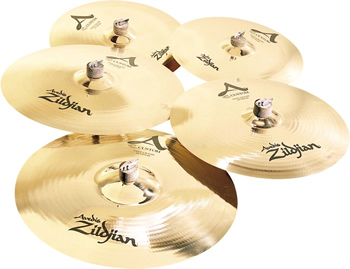 |
Monday, February 25, 2013
Palen Music Center is dedicated to helping children experience excellence, personal growth, and joy through involvement in music. We carry out this mission by supporting area band directors through weekly service, support, educational programs, and quality products. This weekly Quick Note newsletter strives to highlight topics that are immediately helpful in the classroom. Comments, suggestions, ideas, and articles are always welcome.
Looking for help on a particular topic? Be sure to check out our Quick Note Catalog of back issues! |
 |
Need any large concert percussion? Scroll down for some incredible limited-time deals! Solving The Mystery of Cymbal Selection by Ken Crisp
In the school band program we typically see the school purchasing a drum set that will be used for many years by several different percussionists. With this in mind we tend to pick cymbals for that drum kit that fit the needs of the band in a more general way. Here are a few helpful characteristics of cymbals:
When purchasing cymbals for a drum kit, sometimes it is better to think in terms of a set of cymbals instead of thinking of purchasing individual cymbals. A basic cymbal set might include:
To this basic cymbal set you might add some of the following if needed. 1 or 2 larger crash cymbals, such as a 17" and an 18". 1- splash cymbal, 6" or 8" 1-Medium China cymbal. China cymbals are inverted and are used for special effects. They will produce a more "trashy" sound and can be used as either a crash or a special effect ride cymbal. In any case, when purchasing cymbals, you get what you pay for. It doesn't pay to buy anything but the highest quality. Most percussionists would agree that the most popular brands of cymbals are Zildjian and Sabian. Either of these brands are acceptable for school band and jazz band programs. Cymbals are also available from these brands in box sets. Some suggested box sets might include: Many other box sets are available as well. Please see your Palen Representative for more information.
Ken Crisp
|
 Cymbal selection is a very personal process for the set drummer. The set drummer will often play test many different cymbals to select the exact sound and response they want. They may change drum kits many times, but use the same set of cymbals for years and only add cymbals for special effects. when it comes to selecting cymbals for the school band or jazz band program sometimes we need to be a little less discriminating.
Cymbal selection is a very personal process for the set drummer. The set drummer will often play test many different cymbals to select the exact sound and response they want. They may change drum kits many times, but use the same set of cymbals for years and only add cymbals for special effects. when it comes to selecting cymbals for the school band or jazz band program sometimes we need to be a little less discriminating.